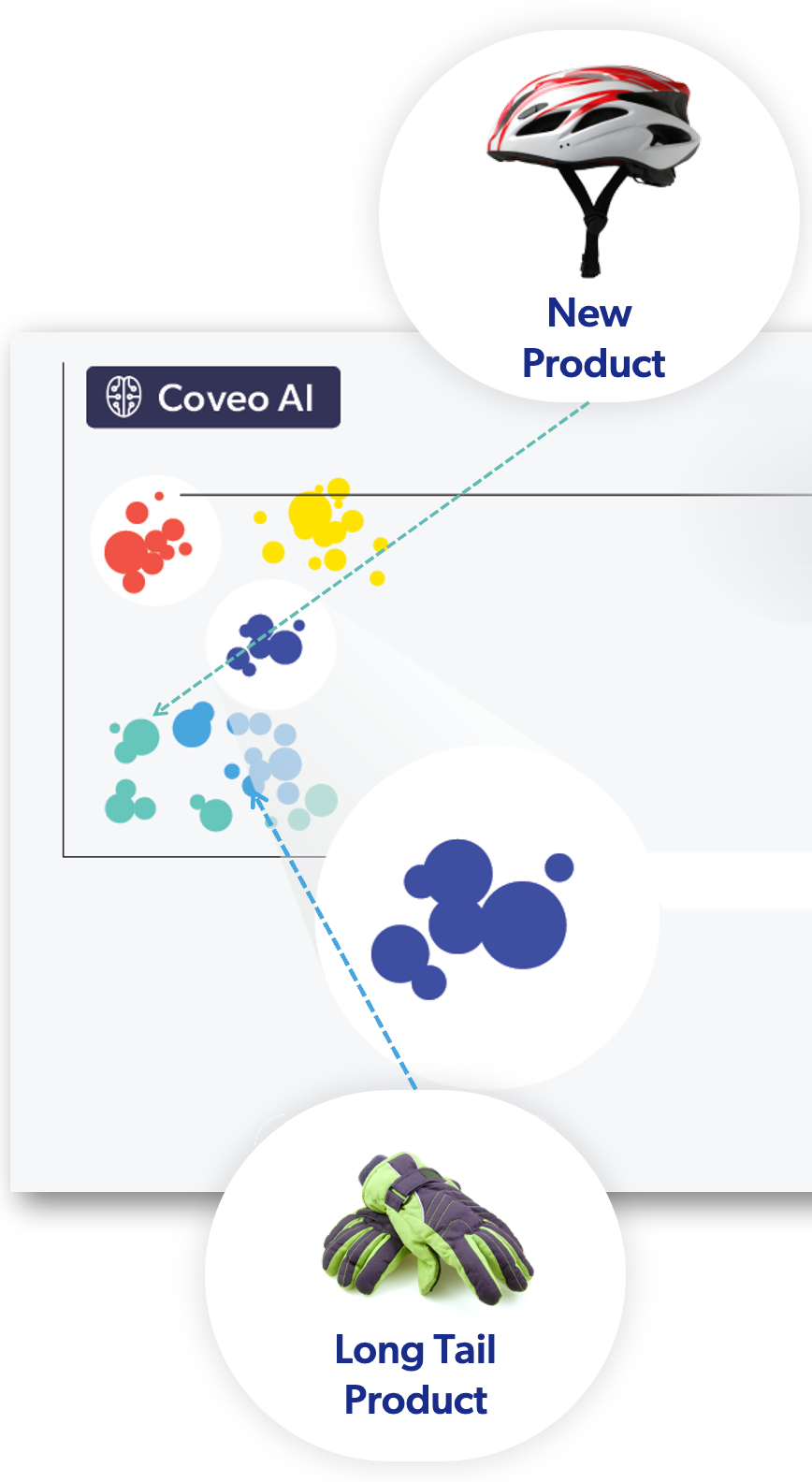About the Cold Start model
About the Cold Start model
Coveo Personalization-as-you-go (PAYG) models rely on product vectors and embeddings, as well as on user session vectors to deliver personalized recommendations and search results for each customer. These models are built by identifying relationships between indexed products based on behavioral data.
PAYG models can generate meaningful representations of user behavior in the form of vectors, which are then embedded directly into the catalog entity. However, when dealing with long tail (less popular) or new products, traditional algorithms may not have a sufficiently large sample size to establish precise vector representations.
To optimize your product inventory coverage and enhance the accuracy of recommendations and search results, the index's embedding procedure integrates a Cold Start model. This allows for precise positioning of products within the vector space, even when they have limited or no traffic data associated with them.
How does the Cold Start model work?

The Cold Start model effectively positions products in the vector space, regardless of the traffic volumes they receive. To achieve this, instead of depending solely on customer interactions with a product, the Cold Start model uses the product’s attributes to generate a product vector and position it within the vector space.
By adding product attributes to the model, such as the category, brand, and description, the embedding procedure is able to capture the essence of a product and reliably generate a product vector, even for new products that have no interactions yet. This means that low interaction products, or new products, can be suggested by Coveo ML PAYG models as soon as they’re added to the index.